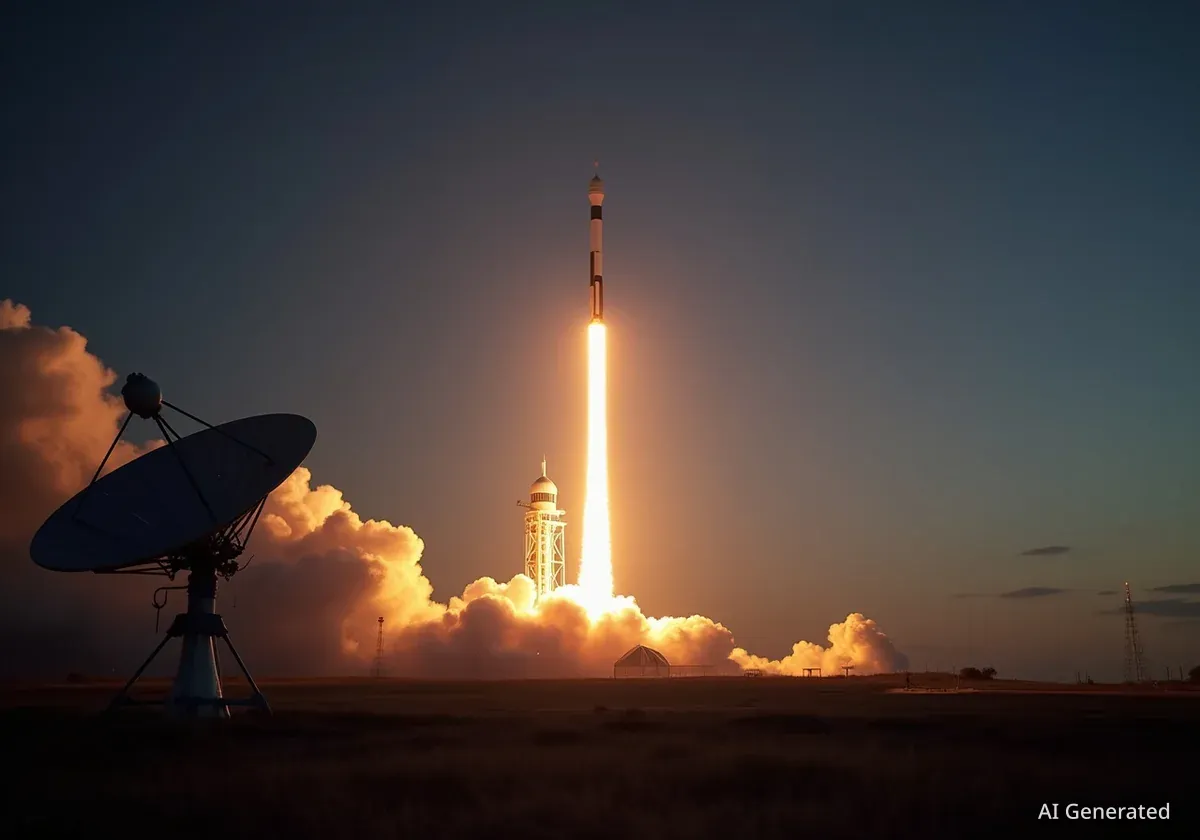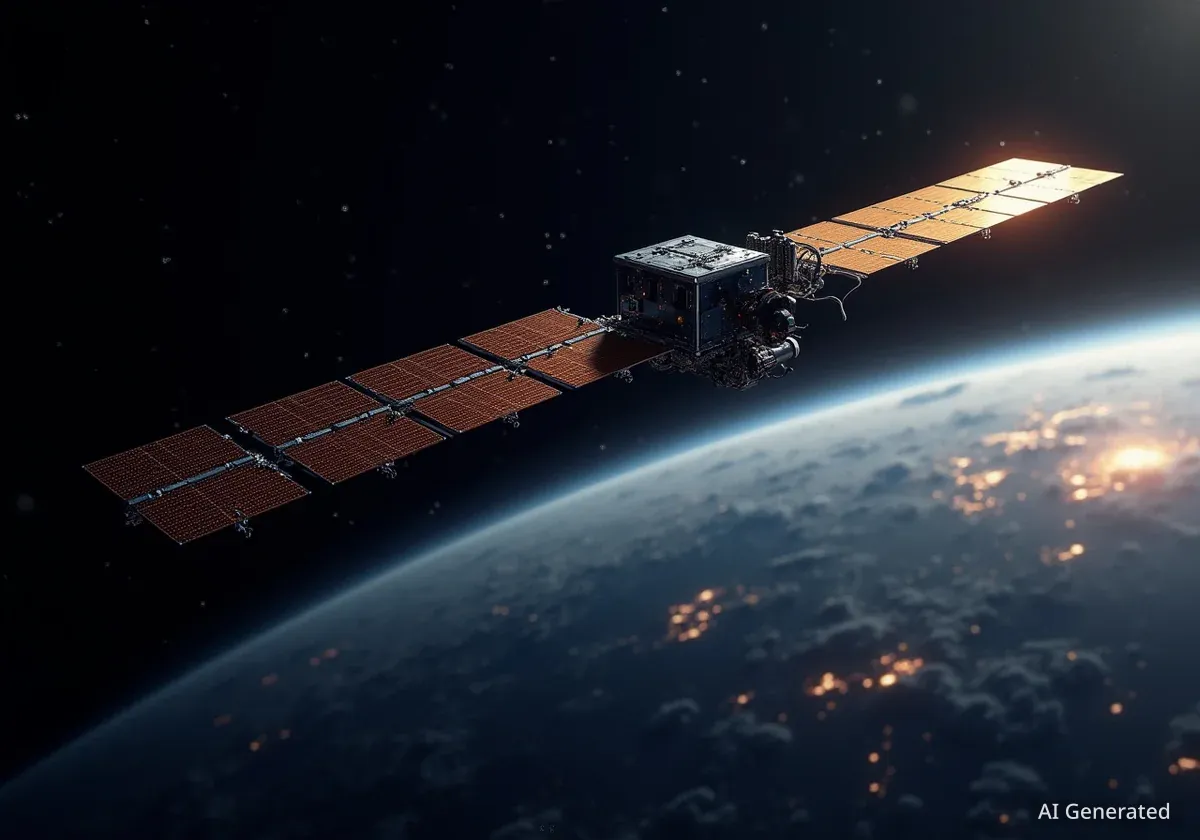A SpaceX Falcon 9 rocket successfully launched 21 satellites into low Earth orbit for the U.S. Space Development Agency (SDA) on October 15. The mission, which lifted off from Vandenberg Space Force Base in California, is the second deployment for the agency's advanced military communication network, known as the Transport Layer.
Key Takeaways
- SpaceX launched 21 satellites for the Space Development Agency's Transport Layer from California.
- The satellites are part of the Proliferated Warfighter Space Architecture (PWSA), a mesh network in low Earth orbit.
- This mission adds the second "plane" of satellites to the Tranche 1 constellation.
- The network is designed to provide secure, high-speed data connectivity for military forces worldwide.
Details of the October 15 Launch
The Falcon 9 rocket lifted off at 7:06 p.m. Eastern, carrying its payload for the Space Development Agency. This launch deployed the second group, or "plane," of satellites for Tranche 1 of the Transport Layer. The first plane was successfully launched on September 10.
These missions are part of an ambitious plan to build a global network of data transport and sensor satellites. The initiative, named the Proliferated Warfighter Space Architecture (PWSA), aims to enhance U.S. military communication and surveillance capabilities from space.
A New Approach to Military Space Assets
The Space Development Agency was established in 2019 with a clear mandate: to move the Pentagon away from its traditional reliance on large, expensive satellites in geostationary orbit. Instead, the SDA focuses on deploying large constellations of smaller, more affordable spacecraft in low Earth orbit. This strategy leverages commercial manufacturing techniques and rapid acquisition to build a more resilient and responsive space architecture.
Building a Global Communication Backbone
The primary function of the Transport Layer is to provide military forces with secure, low-latency connectivity that extends beyond the line of sight. One of its main objectives is to connect with the Link 16 tactical data network, which is the primary communication system used by the U.S. military and its allies on the battlefield.
By using the satellite network as a relay, the effective range of Link 16 radios can be extended from a few hundred miles to virtually anywhere on the globe. This capability is expected to be a significant advantage for forces operating in large areas, such as the U.S. Indo-Pacific Command, which has been identified as an early user of the network.
"These data transport satellites will provide unprecedented levels of space-based connectivity for national security situational awareness, enabling our forces to respond faster to emerging threats," said Joe Rickers, vice president of Transport, Tracking & Warning programs at Lockheed Martin.
The satellites are equipped with advanced optical inter-satellite communication terminals. These laser links allow the spacecraft to pass large volumes of data between each other in orbit, creating a seamless mesh network that can route information quickly and securely across the globe.
Contractors and Constellation Structure
The 21 satellites launched in this mission were manufactured by Lockheed Martin. The company secured a $700 million contract in 2022 to produce a total of 42 satellites for the Tranche 1 constellation. The spacecraft platforms, or buses, were supplied by Terran Orbital, a subsidiary of Lockheed Martin.
Lockheed Martin is not the only contractor involved in building out this critical infrastructure. York Space Systems and Northrop Grumman are also under contract to supply satellites for the Tranche 1 Transport Layer.
Tranche 1 by the Numbers
- Total Satellites: 154 (126 Transport Layer, 28 Tracking Layer)
- Total Launches: 10 (6 for Transport, 4 for Tracking)
- Key Contractors: Lockheed Martin, York Space Systems, Northrop Grumman
The Structure of Tranche 1
The Space Development Agency plans to organize the Tranche 1 satellites into 10 distinct orbital planes. A plane is a set of satellites following the same orbital path, arranged to provide continuous coverage over a specific region as the Earth rotates beneath them.
The full Tranche 1 constellation will ultimately consist of 126 Transport Layer satellites for data relay and an additional 28 Tracking Layer satellites designed for missile warning and tracking. These two layers will work together to provide a comprehensive network for both communication and defense. According to the current plan, Lockheed Martin, York Space, and Northrop Grumman are each responsible for producing two of the Transport Layer planes.
The ongoing deployment of these satellites marks a significant step forward in the modernization of U.S. military space capabilities, emphasizing speed, resilience, and global connectivity.





